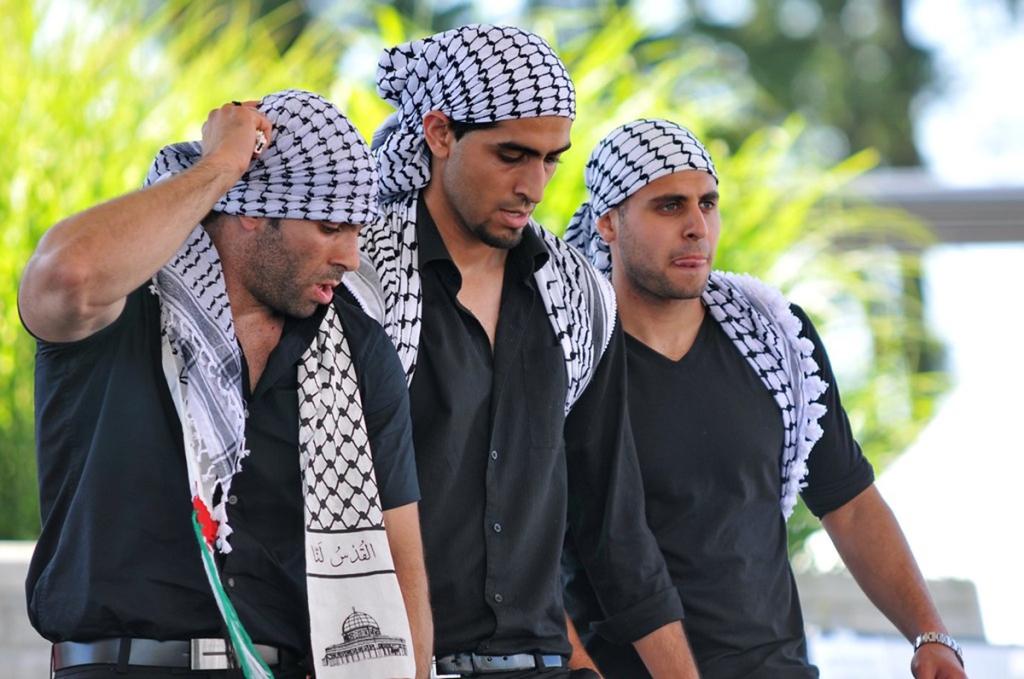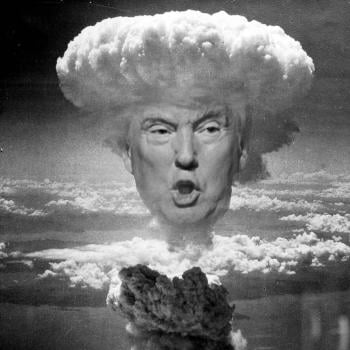God’s people have become experts at traumatizing one another. But two men I met after a trauma conference gave me hope for peace.

I’m writing this from a hotel room in La Jolla, California. With a team from work, I have spent the past few days at IVAT’s 29th San Diego Summit on Violence, Abuse, and Trauma Over the Course of a Lifetime. I’ve just learned that Israel has moved its attacks beyond Gaza, to the West Bank. Because of the conference, news has reached me slowly. The violence in the West Bank has been going on for a week.
The conference is now over. Triggered by some topics we’ve explored at the convention, my team and I decide to spend the afternoon at the beach. Trying to get our minds in a more cheerful place, we peruse the shops before our return trip tomorrow. But my thoughts are on the Middle East conflict. My heart turns to my high school friend Shadi from Beit Sahour, West Bank. I think of the violence and trauma his friends and family are experiencing right now.
The Keffiyeh
In my backpack, along with my snorkel, fins, and beach towel, is a tatty keffiyeh that always accompanies me on my travels. It’s not the first Palestinian scarf I ever had, the one Shadi gave me in high school. Thirty-four years have passed since then, and the original one wore out years ago. But I keep replacing them as they become ragged. They’re good for everything—not just as a neck scarf, but as a head covering, a towel, a makeshift tablecloth, a small beach blanket, and more. (Click here to read other suggestions.) I need a new one.
I wander into San Diego Crystals and Jewelry on Prospect Street in La Jolla. Immediately, I notice the Arab-culture items for sale, including a huge collection of hijabs. I ask the shopkeeper if he has any keffiyehs for sale. He seems confused at first, but when I explain he says, “Oh, in Afghanistan, where I am from, they are called shemaghs.” Unfortunately, he says he doesn’t sell them. “We only sell women’s scarves,” he tells me. “When people see the kind of scarf you’re talking about, it makes them angry.”

I know what he means. “You’re concerned they’ll think you’re terrorists,” I observe. I’m aware of the sideways glances I get when I wear a keffiyeh. I wear it in solidarity with my Palestinian adopted-extended family. People must think it odd—me, a White man with red-blond hair and blue eyes. When an Arab wears a traditional scarf in the United States, all many people can think about are terrorists.
Most Americans know nothing about the national pride this garment inspires. Like Scottish kilts boasting plaids that represent their respective clans, keffiyehs/shemaghs bear distinctive patterns symbolizing various Arab nations. Sadly, when most Americans see these beautiful scarves, they don’t think of the honor and dignity of those nations. They only think of the actions of radical factions.
Because of this misunderstanding, the shopkeeper says he doesn’t carry keffiyehs. Due to violence and trauma on the part of others, society robs him of the ability to display a symbol of his national identity. It prevents him from selling a particular product associated with his people.
The Tasbih
As we continue our conversation, we grieve this injustice together. He introduces himself to me as Sami, and I give him my name as well. There’s something so simple and profound about exchanging names. I am no longer “the customer,” and he is not just “the shopkeeper.” We discuss our common experiences as immigrants—he to the US, and I to Canada.
In our conversation about the shemagh (which he pronounces like the smog over Los Angeles) he pulls out his phone and shows me a picture of himself in traditional Afghan attire. I notice a set of beads that he is holding in the picture, and I ask about them. “They are called Tasbih,” he says. “They are Muslim prayer beads.” I tell him that I am fascinated with prayer beads. I’ve prayed with Roman Catholic rosaries, and Anglican rosaries for decades. I’ve meditated with mala beads for years. I frequently give prayer beads to clients who need meditation and ask for assistive devices.
Pointing to the beads he is holding in the picture, I ask, “Do you have any of those here?” He says he doesn’t have any of the thirty-three bead tasbihat like in the picture. However, he does carry some ninety-nine bead sets. He takes a set off the shelf. I admire the weight of the stone beads, and their masculine beauty. “Can you show me how to pray with them?” I ask. He gladly gives me a demonstration, telling me about the different phrases you repeat for each of the beads. (Click here to see how.)
“There are ninety-nine beads, one for each of the names of Allah, right?” I say.
His eyes brighten. “How do you know so much about other religions?” he asks. I tell him I have a degree in world religions. “Which religion do you feel drawn to the most?” he asks. I point to the Celtic cross on my arm and tell him I’m a Christian. “Besides Christianity, is there a religion that draws you the most?” I talk a little about Taoism. Then, I shift to the things I appreciate about his religion as well.

One God, and One People
Finally, I make my way back to the Tasbih, and ask how much. “Those normally sell for eighty dollars,” he says, “But for you, my friend, I’ll take twenty.” It could be a sales tactic. I’ve worked in sales before, myself. But I choose to believe that something more profound has happened here and that he has offered me these exquisite prayer beads at his cost, as a genuine gesture of peace. I thank him and purchase the beads.
Our conversation turns to what’s going on right now in the West Bank and Gaza. “You know, there’s only one way that wars are going to end,” I say. “It can only happen when people do exactly what we’ve been doing. When we talk with one another. There’s only one God, and we’re all one people.”
“One God and one people,” Sami says and offers his hand for a fist-bump.
I thank him again and bump his fist. “As-salamu alaykum,” I say.
Sami smiles. “Wa alaykumu s-salam,” he says as I leave the store.
We Are All One People
I cross Prospect Street and head over to Warwick’s, the country’s oldest continuously family-owned and operated bookstore, since 1896. In search of a gift for my wife, I exchange conversation with a couple of the people on staff. Soon, an older gentleman approaches me and asks about my accent, which he mistakes for New York. Nobody has ever made that mistake before, but I notice his thick accent and appreciate that it can be difficult to identify various English accents if you aren’t a native English speaker. I ask him where he is from.
“Israel,” he says. It’s not until he turns his head that I notice the yarmulke he wears.
“That’s fantastic,” I say. “I have always wanted to go there.”
He shakes his finger, a gesture of caution. “Ah, but not right now.”
“No, not right now,” I agree. We talk a little about the current war. “I don’t know why there must be this conflict between us,” he says. “We Jews, Christians, and Muslims have the same God.”
“And we are one people,” I add.
“Yes,” he says. “We are all one people.”
It is a brief exchange, but meaningful, especially considering it was within half an hour of my conversation with Sami.
Willing to See God in Each Other
As I head home from the conference, I’m grateful for all that I’ve learned about violence, abuse, and trauma over the course of a lifetime. We discussed such horrors as human trafficking, rape, grooming, combat PTSD, suicide, homelessness, incarceration, and more. When I watch the news, I think about the violence, abuse, and trauma God’s people inflict on one another. Especially when our hatred for each other stems from religious differences, this can be hard to comprehend. I’m glad I have a four-day weekend after I return, so I can unwind before getting back to the work I do with people experiencing trauma.
Sometimes, doing this work can be discouraging. On bad days, working in social services can make you feel hopeless. But today, I’m encouraged by these two random men I met while shopping. Today, a Christian, a Muslim, and a Jew agree that we have the same God, and we are all one people. If we are willing to see God in each other, and if we are open to dialogue, then just maybe there is hope for peace.














